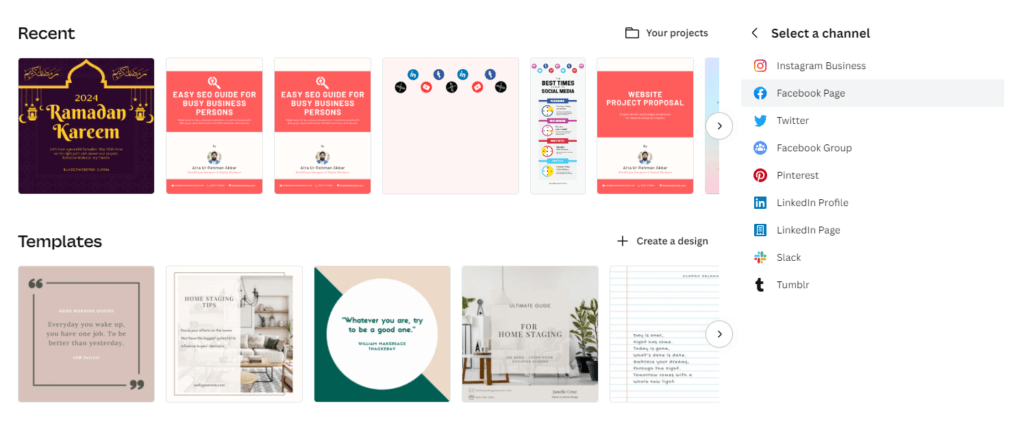Easy social media management guide for busy business owners
A easy to understand guide for busy business persons.
Written By: Atta Ur Rehman Akbar

- Easy social media management guide for busy business owners
- 1. Why does social media matter for your business?
- 2. The challenges busy owners face with social media.
- 3. Focus And Planning.
- 4. Best tools for social media.
- 5. How you can measure the results?
- 6. Selecting the team (Size and Skills):
- 7. Glossary:
- Don't forget to share!
NOTE
To get more from this guide please have a look at the Glossary. So, you can easily understand what has been discussed in this guide.

1. Why does social media matter for your business?
- Reach and Awareness: Billions of people are on social media every month. It’s a massive platform to get your brand out there and be seen by potential customers.
- Targeted Marketing: Social media advertising allows you to target your ideal customer with more focus. You can define demographics, interests, and even behaviors to reach the exact people who will be most receptive to your message.
- Brand Building: Social media lets you cultivate a strong brand identity. By sharing engaging content and interacting with your audience, you can build trust and create a loyal following.
- Customer Engagement: Social media is a two-way street. You can directly connect with your customers, answer questions, and build relationships.
- Market Insights: Social media provides valuable data on customer behavior and industry trends, guiding your business decisions.
- Cost-Effective: Many social media platforms are free to use for basic purposes. Even paid advertising can be very affordable compared to traditional marketing methods.
2. The challenges busy owners face with social media.
- Time & Consistency: Keeping up with a consistent posting schedule, responding to comments and messages, and engaging with followers takes time and dedication. and of course, busy business owners do not have the time for posting, and even startup owners don’t have time to focus on other tasks.
- Content Creation: Coming up with fresh and engaging content regularly can be a real struggle. Busy owners may not have the creative resources or the time to brainstorm and develop winning social media posts.
- Keeping Up with Trends: Social media is constantly evolving, with new features, algorithms, and trends always emerging. It’s hard for busy owners to keep up with the latest developments and adjust their strategies accordingly.
- Measuring Results: Busy business owners don’t have the understanding of terminologies and basic concepts of matrices to measure the results.
3. Focus And Planning.
Not all social media platforms are created equal. Here’s a quick rundown of the most popular ones:
A. Where is your target audience and what are the right platforms?
Not all social media platforms are created equal. Here’s a quick rundown of the most popular ones:
- Facebook: Great all-rounder for most businesses. The audiance is diverse but A recent study of Facebook age demographics shows that the 25 to 34 age group has the highest number of Facebook users. 29.9% of all active Facebook users fall within this range.
- TikTok & Instagram: Most of the college-going students also known as Gen Z spend their time here.
- LinkedIn: Ideal for B2B (business-to-business) companies and showcasing expertise.
- Twitter: Fast-paced platform for sharing news and updates (works well for customer service too).
Here is a more organized overview of social media channels.
| PLATFORM | KEY FEATURES (Business Perspective) | DOMINANT AUDIENCE |
|---|---|---|
| – Large, diverse user base – Detailed targeting options – In-depth analytics – Established advertising tools (Meta Ads) – Groups for community building – Marketplace for selling products | Age: 25-54 (spread across age groups) Gender: Leans slightly female Interests: Broad, including news, entertainment, social connection | |
| – Highly visual platform (photos & stories) – Influencer marketing opportunities – Strong engagement through comments & likes – Shoppable posts for direct sales – Popular with younger demographics | Age: 18-29 Gender: Skews female Interests: Fashion, beauty, lifestyle, travel | |
| YouTube | – Video-based content sharing – Long watch times – Pre-roll and mid-roll ads – Influencer marketing – Strong for brand storytelling. – Reaches a global audience. | Age: 18-49 (spread across age groups) Gender: Leans slightly male. Interests: Diverse, including entertainment, music, tutorials, gaming |
| X (Formerly Twitter) | – Real-time updates and news. – Short-form content (tweets). – Hashtags for audience discovery. – Live streaming events. – Popular with thought leaders and news outlets. | Age: 18-49 Gender: More balanced than some platforms Interests: Current events, breaking news, business, social commentary |
| – Professional networking – B2B marketing opportunities – Content marketing through articles & posts – Job postings and recruitment – Focus on industry expertise | Age: 25-64 (professionals) Gender: More balanced than some platforms Interests: Careers, professional development, industry news |
Pro Tip
Focus on one or two platforms to start. You can always expand later.
B. What is Social Content Calendar and how it makes posting on social media easy?

Well, as you know this guide is only for busy business owners so going into details seems unnecessary. But in case you love to be a techie then here are a few more details. Let me introduce the best source that I have found on HubSpot, for a social media content calendar template/draft. It’s a Google Sheet, here is the link.
HubSpot Social Media Content Calendar.
I have customized and added more post types that are listed below. You can modify as per your needs.
Different types of social media posts:
- 1 or 2 posts/Week
- YT Shorts.
- Top stories from Google News.
- Blog posts share.
- Post an answer to commonly asked question.
- Share Infographics
- Carousal
- Motivational Quotes.
- Mems
- Reshare your top performing posts.
- 1/mon
- YouTube Live Stream
- Podcast
- X(Twitter) Space.
- Share a survey.
- Special day (Occasional).
- Post A Customer Video Testimonial
- Influencer Marketing.
- Company Culture.
- Best Employees Awards
- Employee birthday.
4. Best tools for social media.
The most important tool needed in social media management is the Post scheduler.
- If you’re a startup, I would recommend going with the default social media planners. Facebook, Instagram, LinkedIn, Twitter, and YouTube have built-in post schedular.
- But if you are a medium-sized organization, then I would recommend Canva with $6/mon and an extra $2/user/mon, which is very cost-effective.
Here is the screenshot, look how easy it is to manage social media scheduling with Canva. It has a wide range of supported platforms and ready-made templates making the job easy.

Okay, that’s enough, I think going into more details is out of the scope of this eBook.
5. How you can measure the results?
Well, simply ask the following questions to your social media manager.
- How many followers do you have this week?
- What kind of content is getting the most views?
- What are the audience demographics who are visiting your social channel?
- Are the audience engaged with content, how many Impressions, comments, reactions, and reposts do you have this week?
6. Selecting the team (Size and Skills):
We have already written a detailed blog post on “Why and how to digitalize your business” where we have mentioned the size and skill set of teams according to the size of the organization.
Business Digitalization Importance
If you don’t know what type and size of team is best for your business then read the article
7. Glossary:
Social Media General Terms:
- Analytics: Data that helps you understand how your social media content is performing. This can include metrics like engagement, reach, and clicks.
- Audience: The people you’re trying to reach with your social media content.
- Bio: A short description of yourself or your brand on a social media profile. Also available on your business pages for every social media.
- Call to Action (CTA): A statement/button that tells users what you want them to do after seeing your content, such as “Click here to learn more” or “Shop now.”
- Content Curation: Finding and sharing relevant content from other sources.
- Engagement: The interaction your content receives, such as likes, comments, and shares.
- Hashtag (#): A word or phrase preceded by a # symbol used to categorize content and make it discoverable. These tags help your post to get more views.
- Impression: The number of times your content is displayed on a user’s screen. One person can view your post multiple times. Mostly the Impression Frequency is 1.5 to 2.
- Key Performance Indicator (KPI): A measurable value that demonstrates how effectively you’re achieving your social media goals. For instance, Followers, engagement, and Impressions.
Community Management Terms:
- Community Manager: The person responsible for building and managing relationships with your audience on social media.
- Direct Message (DM): A private message sent between two users on a social media platform.
- Engagement Rate: A metric that shows how well your content is resonating with your audience. It’s typically calculated by dividing the total number of engagements (likes, comments, shares) by the number of impressions and multiplying by 100.
Content Creation Terms:
- Content Marketing: Creating and sharing valuable content to attract and retain an audience.
- Evergreen Content: Content that remains relevant and valuable over time.
- Story: Short, disappearing video or photo content on platforms like Instagram and Facebook.



